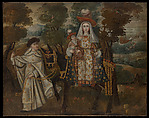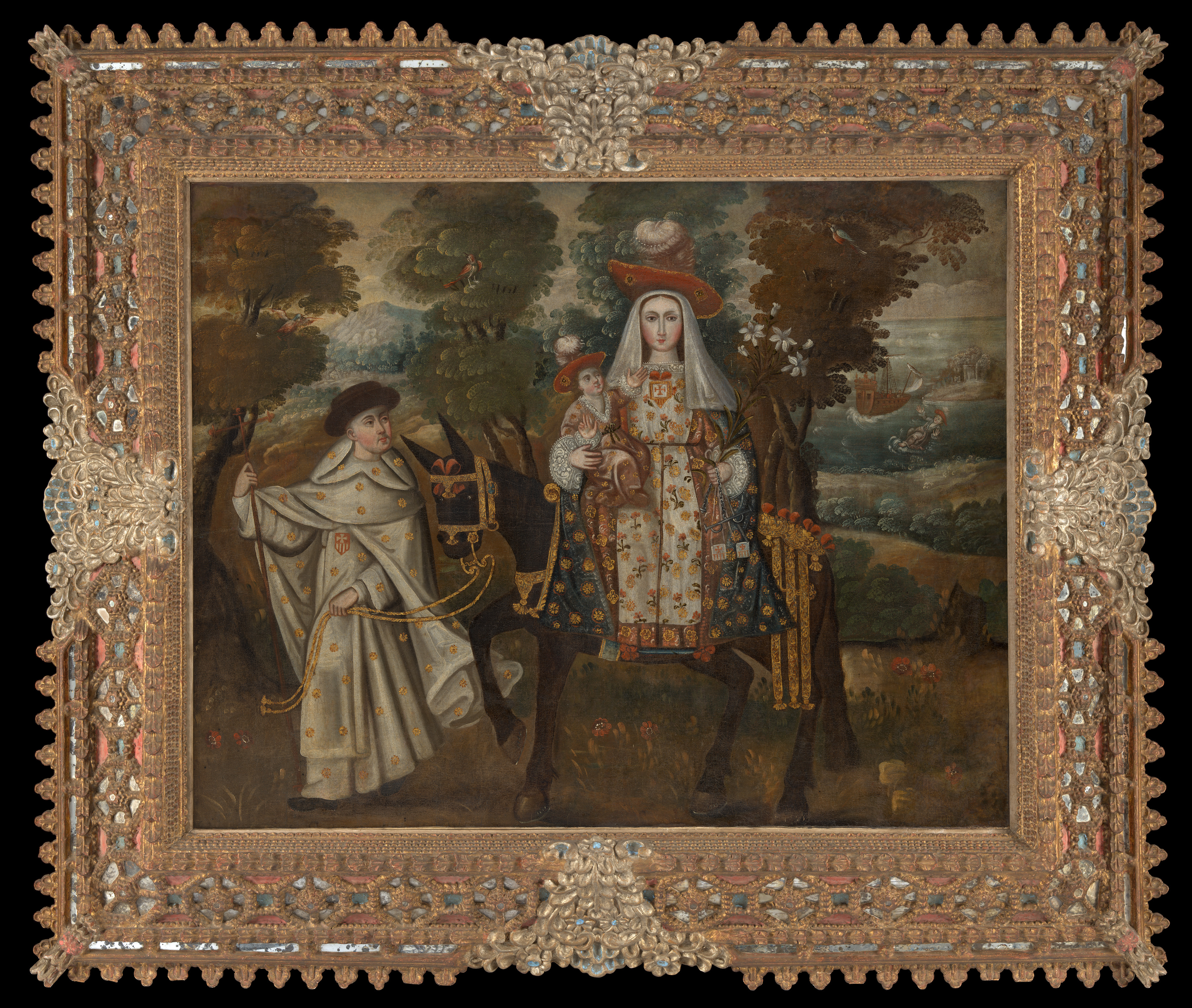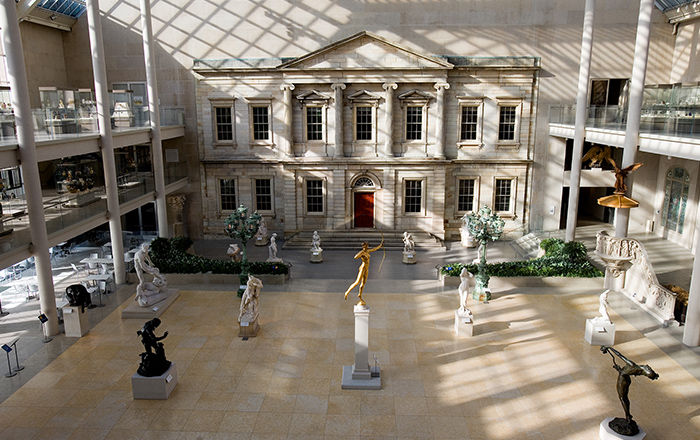Our Lady of Mercy, called “The Pilgrim of Quito”
This work belongs to the genre of "pilgrim images," cult images or likenesses of them that were taken on alms-gathering missions. In a scene reminiscent of the Holy Family’s flight into Egypt, a miracle-working image of the Virgin and Child venerated by the Mercedarians of Quito is transported on a mule led by a white-robed friar through a lush landscape with distant vistas of a seacoast and mountains.The Virgin and Child are richly attired in garments patterned with gold flowers and wear the broad, plumed hats of travelers. The Virgin carries the holy child, who raises his hand in blessing, on one arm. With her other hand, she grasps the iron shackles and scapular of the Mercedarian order as well as a stalk of white lilies. Both the Virgin and her friar companion wear Mercedarian shields. The mule is outfitted with golden trappings more suitable for ceremonial entry than travel. A vignette in the background narrates a miracle that occurred at sea, between Portobello and Cartagena, when Dutch pirates seized and profaned the image, prompting the Christ Child to throw itself into the sea. According to legend, both Virgin and Child were miraculously saved and restored to the care of the Mercedarians in Quito.
The Virgin of Mercy of Quito, is more commonly depicted seated on a throne, dressed for travel, Paintings like the present one that relate the journeys and miracle stories of the Virgin of Mercy are more rare. Such stories emerged, or were invented, in connection with the actual practice of taking the image on missions to gather alms for the construction of the Mercedarian church in Quito. The image, a dressed, polychromed wood sculpture of the Virgin and Child, is traditionally held to have been a gift from Carlos V of Spain. Slightly less than life size, it replicated an image of the Virgin in the royal chapel of the Mercedarian church in Barcelona. The Quito Virgin, which soon gained fame as a miracle-worker, was venerated in the Mercedarian church until its collapse following an earthquake in 1698. The image began its alms-gathering peregrinations after the friars resolved to build a new church. Over the course of nearly thirty years, from 1706 until 1735, the Quito Virgin was taken throughout Spanish America, to cities and towns as far north as Mexico and as far south as Chile. In 1735 it was taken via Cuba to the Spanish port of Cádiz, where it remained until its destruction in 1936. This painting, by a Cuzco artist, is likely to have been commissioned in connection with the establishment of new sites of devotion to the Quito Virgin in Peru in the aftermath of the Mercedarian missions.
--Ronda Kasl
This image cannot be enlarged, viewed at full screen, or downloaded.
This artwork is meant to be viewed from right to left. Scroll left to view more.




